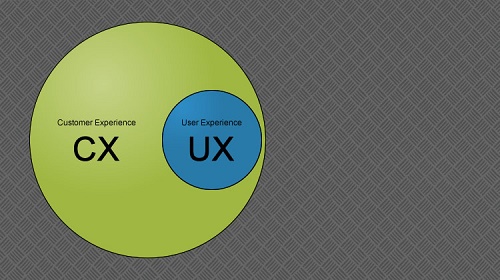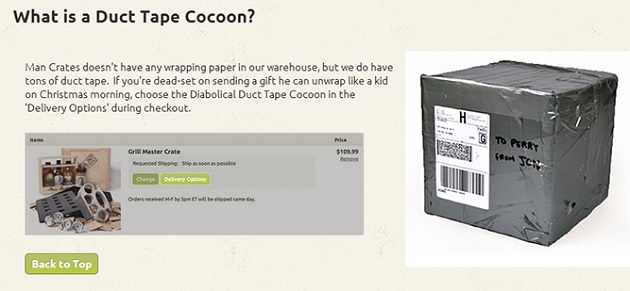
Why is Customer Intelligence important for growing ecommerce
Customer intelligence seems scary. Maybe you fear it’s something super-complicated that you need to learn to do on top of your duties of running an online store.
Why is customer intelligence important? Many owners think they’re not big enough for it yet.
Actually, customer intelligence is best used for growth by middle-sized e-commerce businesses (about $15,000 -$20,000/ month in revenue) that are trying to climb one step up.
They’re neither beginners nor experts, but most importantly, their databases are manageable and they can still dedicate time to each individual customer.
From then on, CI data should guide strategy because that’s the cost-effective, high-ROI, well-targeted way to growth.
Growth is achieved in two main ways: increasing customer Lifetime Value (LTV)/ Average Order Value (AOV) and acquiring more customers.
If you see them as order numbers and names on packages, you’re not set for success in ecommerce.
In this article, we’ll talk about how CI is the key to an outstanding customer experience, which in turns translates into increased retention and referrals.
How customer experience depends on customer intelligence?
As Gregori Ciotti notes on The Art of Customer Loyalty:
“It’s hard to go toe-to-toe with the big guys on anything, especially marketing and customer acquisition. While you may not be able to out-spend your competitors, great support is the one competitive advantage that most enterprise companies just can’t copy.”
E-commerce is not about the transaction – people can buy identical products from many sellers online and offline at competitive prices. People buy experiences. In fact, 42% survey respondents say they’d pay more for a friendlier service and 52% would pay premium for a faster service.

usabilitygeek.com
What does experience include?
The navigation on the website – it’s easy, intuitive and makes sense for the probable searches people do. No technical issues or missing elements.
The imagery and product descriptions – they convey the right message about product quality, manufacturing process, uses and intended users.
The support – both pre-purchase and after, it’s easily accessible, responsive, helpful and above all, going out of its way to delight customers.
The products – they are better than what is promised, and customers are happy with them. Overdelivering is the shortest way to WOW-ing your customers.
Where is CI in all that?
To aim right, you should know your target well. CI tells you:
- What engages visitors well before ordering so you know how to stimulate more profitable engagement.
- What channels work for your audience for delivering value.
- What are the demographics so you better understand their motifs, priorities, problems and create a memorable experience tailored for their psychology.
- What products they interact with so you know what products inspire loyalty while others disappoint.
- What is the general flow of interaction with your website to identify missing points like a more visible FAQ page, accessible support, clear terms, and conditions, etc.
Basically, customer intelligence shows you who your customers are and how you can deliver an absolutely amazing customer experience that fits their preferences in all aspects of the journey.
Why is customer intelligence important then? It kick-starts everything else.
Then, people are delighted with the feeling they get shopping with you, which leads to the two main paths to growing in ecommerce:
Increased retention. Of course, they’re coming back to the store that makes shopping easy, has exactly what they need, speaks their language, looks so cool and treats them right. How to turn into that store?
More on developing a customer retention program based on loyalty
Increased referrals. People want to share only the greatest things that happen to them. If you blow their mind with customer service, they’ll remember and tell their friends.
More on building a marketing strategy around referral engine
Customer Intelligence, branding and the customer experience
Branding is the overall image you project to create a given feeling for your business. It’s crucial for online businesses where you have only a few seconds to capture visitors’ attention before they jump to a competitor. It’s what sets you apart.
How does branding relate to CI and CX?
Your products, values, attitude, support, website, operations – everything – is part of your brand because it forms the overall perception of your business. That’s why it’s so important to make them all consistent in making the right impression.
In order to deliver the right message, though, you need to know your customers and this is where CI comes in play. Without it, you’re shooting in the dark and possibly creating a brand that doesn’t appeal to your target audience.
Here a few examples how different e-commerce businesses take care of the various aspects of a brand to stay relevant to their customers.
Brand values
Since values and what the brand stands for sell better than the product itself, generic stores with undefined values will struggle. No matter the product, you have to make your customers feel part of a community that supports an idea.
Whether it’s ethical clothing manufacturing, enjoying the outdoors, or well-groomed facial hair, your customers need it as an anchor for their loyalty. Else, you cannot stand out in the oversaturated online commerce world.
Why should they pick you if you don’t hold anything dear? Customer intelligence should point you in the right direction what resonates with your target audience. As for setting your brand values in place, you may find this starting guide helpful.
One example would be the inspired mission statement of beard cosmetics products company Barba Brava (translated from Portuguese):
“Barba Brava was founded to support the man’s lifestyle that has a beard.
Our mission is to develop products and content to help the bearded achieve the full potential of their beards and in the process change the way we are perceived by society.”
Tone of voice
Are you sure your customers talk the way you talk to them on your website and on social media? What about support? Your tone of voice represents your brand’s character – friendly, fun, easy-going, or serious, didactic and motherly.
It helps if you stop thinking of a brand and imagine your business as a person instead. Add as many details as possible – gender, appearance, the manner of walking, habits, etc. This will give an idea of the natural tone of voice you should use.
For example, Man Crates state in their manifesto:
“We believe men deserve better gifts. Gifts that stir a primal craze of chest bumps and cheers, not polite half-smiles.”
They same buddy tone of voice is kept throughout communications and apparently clicks with the target audience.

Simplicity
One 2015 survey discovered that 63% of respondents are willing to pay more for a simpler experience. This means you have to make your product and shopping experience uncomplicated and trouble-free if you want to be on the path of Warby Parker, Netflix and the like.
In a world of informational overload, limited free time and impatience, frills stress out customers. There’s a tendency to cut down on assortment and limit product features to the basic ones that align with the values.
Native makes only 3 kinds of natural, paraben-free deodorant, a healthy alternative to the mainstream products.
Lifestyle
As the light motif here is that people buy how you make them feel, being a part of their lives is a way of enhancing the relationship. You can touch on different areas without even bringing up your products – share their passions and give more than expected.
Whatever you sell is just means to become what they want to be – marathon runners, good mothers, healthy workaholics or knowledgeable professionals.
Sitting in your product corner and missing on opportunities to make a difference for those people in other aspects of their life would not help you grow.
While you don’t have to outstretch yourself, use CI to gain insights about what they like, where they hang out online and so on. Then try to be more than a merchant. That should be easy when you have your values in check and serve a niche you’re passionate about yourself.
Barney Cools, hip men’s wear brand, is delightfully resourceful on giving their customers more than just clothes to shop. They have a specially-curated SoundCloud channel, and an unorthodox boy magazine-style blog and they organize parties with alternative artists.
Is that Inbound Marketing? Yes. Does it create a bond with a very specific target group of customers by enriching their lives? Yes.
Customer delight is in the details
Depending on the tool you use, CI can give you incredibly clear portraits of your customers. Putting together all details it collects, you can personalize your customer care to levels, unheard of before.
The best part? Smaller businesses have the advantage of a smaller customer base to delight. Yes, in this case, this is an advantage and, when you do it right and the word spreads, an avalanche of similar customer come pouring in. Bigger businesses could never beat you to that. Growth based on personalization is yours.
Want to see all that in action?
The Shopify blog suggests 6 Creative Ways to Surprise And Delight Your Customers.
Hubspot has those 3 Amazing Examples of Ecommerce Companies Ensuring Customer Delight.
And Nanorep lists epic 50 E-Commerce Customer Experience Examples of Great CX.
Why is Customer Intelligence Important in ecommerce now?
Because it gives you a direction. It lights the way to happy customers. It shows you how you can deliver the most tailored customer experience that will boost your retention rate and stimulate referrals – the sure-fire ways to grow in sales.
See, all use of customer intelligence we suggest is simply observing your customers individually and making conclusions how you can deliver superior service to them based on the behaviors and preferences they show. Just watch and learn, no spreadsheets, no statistics.
If it’s about personalities, relationships and being human in your customer care, nothing works better than simply responding to people’s actions just like in real life.
Build and grow your ecommerce brand
Metrilo’s mission is to help you build your ecommerce brand and win your place in the customer’s heart. We share what we learn from our daily work with product innovators and founders here. Subscribe to our weekly newsletter to get the freshest lessons and conquer your niche.
We promise, no spam.
Thank you for subscribing!
See you soon :-)





